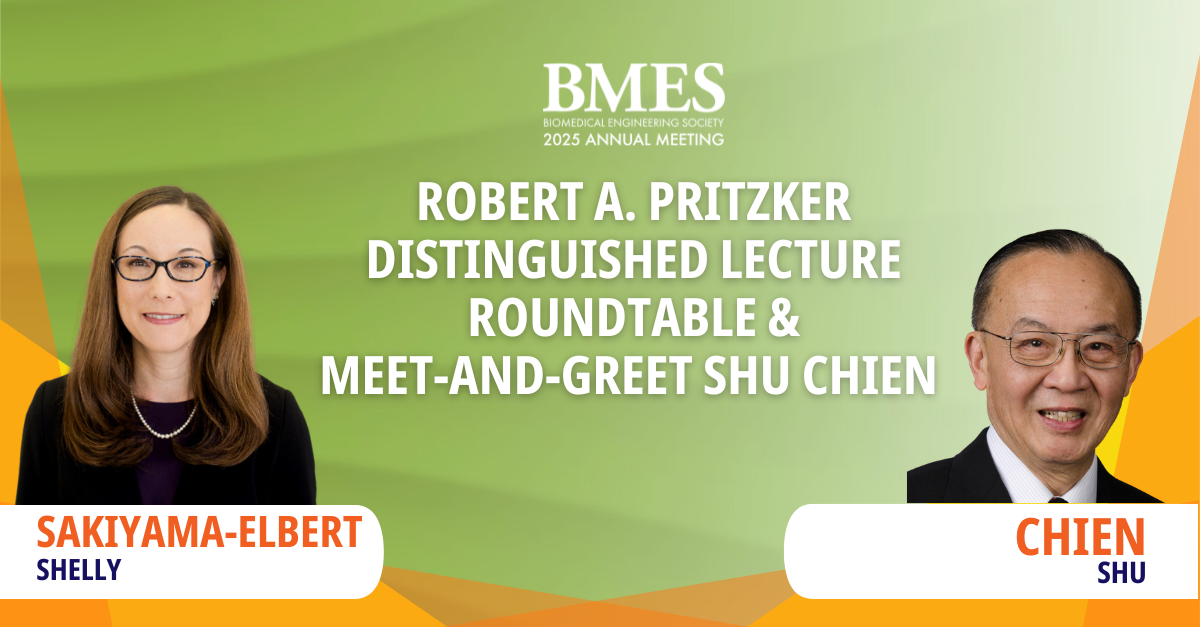Two New Editors-in-Chief Named for BMES Journals
Two new Editors-in-Chief were selected for two prestigious Society journals: Keefe Manning, was named the new Editor-in-Chief of the Cardiovascular...
BMES serves as the lead society and professional home for biomedical engineers and bioengineers. BMES membership has grown to over 6,700 members, with more than 110+ BMES Student Chapters, three Special Interest Groups (SIGs), and four professional journals.
Welcome to the BMES Hub, a cutting-edge collaborative platform created to connect members, foster innovation, and facilitate conversations within the biomedical engineering community.
Discover all of the ways that you can boost your presence and ROI at the 2024 BMES Annual Meeting. Browse a range of on-site and digital promotional opportunities designed to suit any goal or budget that will provide maximum impact.
A study on molecular interactions by biomedical engineers in the University of Minnesota's College of Science and Engineering will make it easier and more efficient for scientists to develop new medicines and other therapies for diseases such as cancer, HIV, and autoimmune diseases, the university announced.
The study resulted in a mathematical framework that simulates the effects of the key parameters that control interactions between molecules that have multiple binding sites, as is the case for many medicines, according to the announcement.
Researchers plan to use this computational model to develop a web-based app that other researchers can use to speed the development of new therapies for diseases.
The research is published in the Proceedings of the National Academy of Sciences (PNAS).
“The big advance with this study is that usually researchers use a trial-and-error experimental method in the lab for studying these kinds of molecular interactions, but here we developed a mathematical model where we know the parameters so we can make accurate predictions using a computer,” said Casim Sarkar, a University of Minnesota biomedical engineering associate professor and senior author of the study. “This computational model will make research much more efficient and could accelerate the creation of new therapies for many kinds of diseases.” Sarkar is a BMES member.
The research team studied three main parameters of molecular interactions—binding strength of each site, rigidity of the linkages between the sites, and the size of the linkage arrays. They looked at how these three parameters can be “dialed up” or “dialed down” to control how molecule chains with two or three binding sites interact with one another. The team then confirmed their model predictions in lab experiments.
“At a fundamental level, many diseases can be traced to a molecule not binding correctly,” said Wesley Errington, a University of Minnesota biomedical engineering postdoctoral researcher and lead author of the study. “By understanding how we can manipulate these ‘dials' that control molecular behavior, we have developed a new programming language that can be used to predict how molecules will bind.” Errington is a BMES member.
Read more HERE.

Two new Editors-in-Chief were selected for two prestigious Society journals: Keefe Manning, was named the new Editor-in-Chief of the Cardiovascular...

As the biomedical engineering community continues to evolve, the need for forward-looking dialogue around research, innovation, and funding has never...

As federal research funding landscapes continue to shift, many in the biomedical engineering community are facing growing uncertainty and widening...

Purdue University researchers have developed RF coils that are formable and stretchable, that could one day replace an MRI machine with an imaging...

1 min read
A team of researchers led by Virginia Commonwealth University College of Engineering and the University of Florida has found a possible mechanical...

1 min read
The Akay Lab biomedical research team at the University of Houston has improved on a microfluidic brain cancer chip previously developed in their...